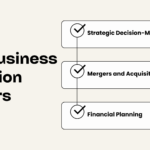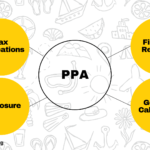Calculate Intrinsic Value of a Company: Intrinsic value is the calculated value of a company. It is the product or currency that is determined via fundamental analysis. An intrinsic value of a company can come from both tangible and intangible assets. It is also referred to as a real value. An intrinsic value of a company and the current market value may not be equal. It depends on the price an investor (rational) pays for a particular investment with its risk level.
Quick Contact
Need Help?
Please Feel Free To Contact Us. We Will Get Back To You With 1-2 Business Days.
[email protected]
+65 9730 4250
How to Calculate Intrinsic Value of a Company?

Breaking Down the Intrinsic Value of a Company
Value investors can calculate the intrinsic value of the company by using fundamental analysis. An analyst considers both the quantitative and qualitative factors in this method. Business model, market focus, and governance are qualitative factors to Calculate Intrinsic Value, while financial statement analysis is a quantitative factor. To know if the asset is undervalued or overvalued, the intrinsic value to be computed is now compared with the market value.
Risk Adjusting the Intrinsic Value of a Company
The risk of adjusting the cash flow is subjective – a mixture of science and art. It has two methods, namely:
- Discount rate.
- Certainly factor

1. Discount Rate Method
In this method of having the intrinsic value risk-adjusted, the analyst usually uses the company’s weighted average cost of capital, which includes the government bond yield risk-free rate alongside a premium based on the stock’s volatility multiplied by an equity risk premium,
Calculate Intrinsic Value.
The discount rate approach, as stated before, uses fundamental theory, a stock is a risky investment if the volatility is more and an investor should have better returns. In a situation like this, a higher discount rate is utilized, and the expected cash flow value in the future is reduced.
2. Certainty Factor Method
A certainty factor is multiplied or assigned to each cash flow against the entire NPV – net present value. An investment is discounted with this method. The discount rate is equal to the yield rate.
Take, for instance: a high-growth company with cash with a probability factor of 50% assigned. The same discount rate can be utilized as the risk related to this high-growth company is already factored with the probability.
Methods of Company Valuation
The three major of valuing a hospitality company is:
Discounted cash flow – is the most used valuation method in determining the intrinsic value. The company’s future cash flows are forecast and discounted to the company’s current value – WACC (Weighted Average Cost of Capital).
Comparable company analysis – also called peer group analysis. Here, similar companies are compared by studying P/E and other trading multiples. The intrinsic value of the target company is provided based on what other similar companies are worth.
Precedent transactions – it is related to the comparable analysis where similar companies that are sold recently are used to compare the company’s value that is discussed.




